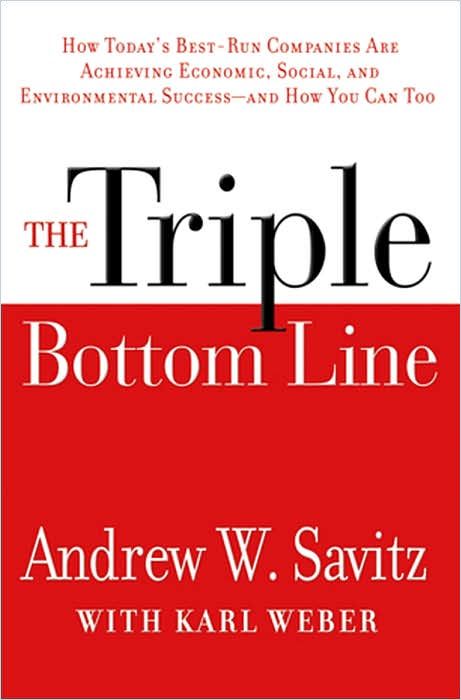Saving the World Through Business

Patagonia is a world-renowned, robust clothing company with reportedly $1 billion in yearly sales and approaching 50 years in business, but you won’t find the word “profit” in the company’s mission statement. Instead, the company found its way to profitability by putting people and the planet first.
“Business Unusual”
Yvon Chouinard always liked being outdoors. Even after he started his first company Chouinard Equipment in 1966, selling climbing gear by catalog, he thought of himself as an outdoorsman first, one who lived by naturalist John Muir’s credo to “leave no trace,” and only secondarily a “reluctant businessman.” He founded Patagonia in 1973 to make durable clothing from high-quality materials with the goal in mind to minimize the environmental impacts of their manufacture. But it was also important to him that working at Patagonia be fun, which is why company workers can take a break when the surf’s up.

As he explains it in his biography, Chouinard wasn’t interested in building a company that didn’t leave him time to spend in the outdoor pursuits he loves.
Patagonia built its corporate culture around Chouinard’s outlook. Employees ran, surfed or played beach volleyball during lunch. Weekends were for company-sponsored ski trips and climbing jaunts.
Yvon Chouinard
After nearly 50 years in business, Patagonia’s corporate culture is legendary, a model of “thrivability,” and consistently mentioned on “Best Places to Work” roundups. It’s not just the zero premium health insurance, the on-site child care, or the surfing either. Head of Patagonia, Inc. Jenna Johnson says it is the mission – “Patagonia is in business to save the planet” – that drives the culture. Employees work every day to make better, more rugged clothing – perfectly designed for its purpose – while streamlining processes in line with sustainability goals.
‘No margin, no mission.’ You have to run a financially sound business in order to create a positive impact.
Ryan Honeyrun and Tiffany Jana
The idea is not only to do less harm, but to do more good, which is an endless challenge for a growing company. But the meaning behind the work keeps Patagonia employees motivated. Chouinard created the company to realize these visions.
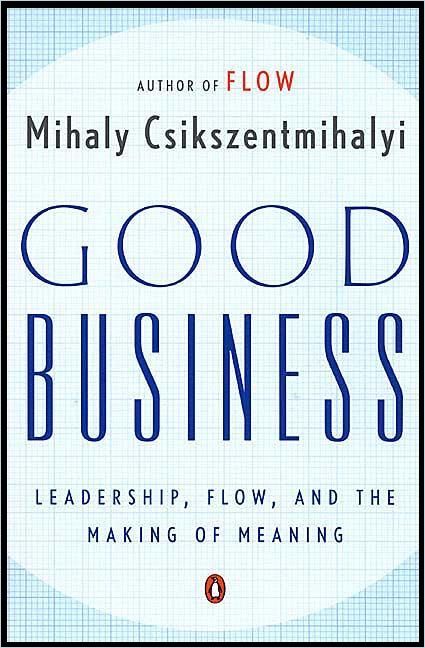
Patagonia made its social and environmental commitments official by becoming a benefit corporation, B Corp, in 2012. One of only 3,500 B Corps in the world, the designation, certified by B Labs, commits companies to business processes that impact the world in positive ways, through employee policies, environmental sustainability, community contributions, social equity and company governance. In this way, B Corps hold themselves publicly accountable for walking the walk, not just talking the talk. This is important as, in the face of historic social and environmental crises, the public increasingly looks to business for leadership.
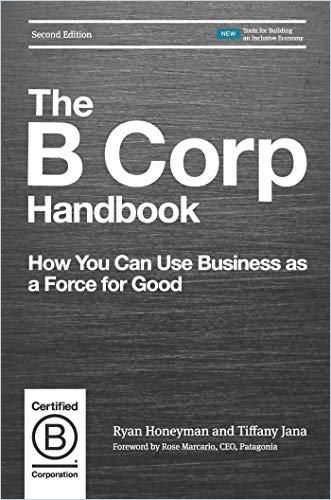
B Corps create a bond of trust with their community, employees and customers that the actions they take will help to build a more inclusive, responsible economy that values a triple bottom line: people, planet and profits.
The Road Less Taken
Patagonia made early decisions in line with its principles, including to find a sustainable way forward and to continuously inform customers about its processes, materials and vendors. Chouinard analyzed every detail of the company’s supply chain, ruling out anything other than organically grown cotton due to the heavy, toxic pesticides most growers used on their crops. Patagonia doesn’t use formaldehyde or the other toxic substances garment manufacturers usually use to add longevity to their product. Instead, they focus on high-quality raw materials, non-toxic processes and non-toxic dyes. All of these things add to the costs of manufacture.
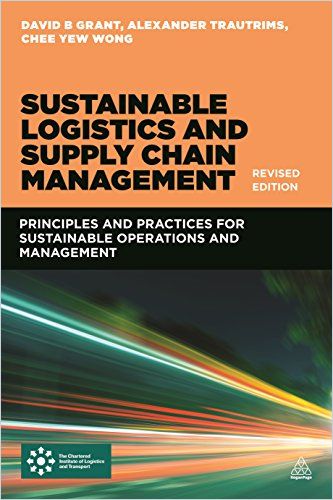
In 1993, Patagonia pioneered the use of recycled polyester in its fleece products. They print their catalogs on recycled paper.
These measures promise cascading benefits to human health, security, prosperity and well-being – giving us a reason to see this planetary crisis as an opportunity to create a just and livable world.
Ryan Honeyrun and Tiffany Jana
The company reuses and recycles resources in the manufacturing process and constantly looks for ways to reduce its environmental footprint. It concerns itself with the “cradle to cradle” life cycle of its products including sourcing, production, packaging, distribution and end-of-life disposal.
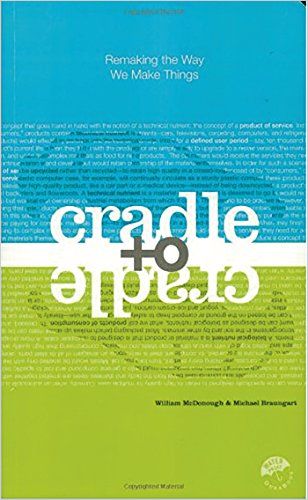
Customers into Raving Fans
Customers like the quality and durability of Patagonia products. What turns them into raving fans is the company’s authenticity. Patagonia can’t compete on price – their commitment to organic and recyclable materials drive up their costs – but customers love knowing their purchase supports a business with ethical goals.
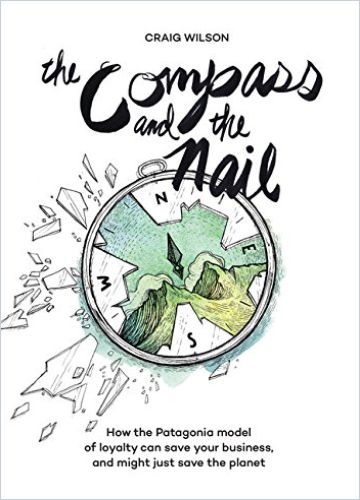
To many observers and customers alike, corporate gestures like marketing designed to show concern about social injustice aren’t authentic. While Uber rolled out a powerful ad campaign avowing solidarity with the Black Lives Matter movement and a high-profile million-dollar donation to help reform the US criminal justice system, they also spent $30 million opposing a California law that would force them to provide better benefits and job security for their contract workers, the majority of whom are people of color.
Shareholder primacy has inspired mass layoffs, tax avoidance and share buyback programs, all of which enrich top executives and shareholders with no discernible benefit to the business itself.
Kristin Toussaint
Yet Patagonia, ever bucking convention, once took out a Black Friday ad in The New York Times that showed one of its jackets with the caption: Don’t Buy This Jacket. To change the consumer “throwaway” mind-set of cheap, disposable goods, Patagonia positioned its clothing as a long-term investment. It takes its environmental advocacy seriously, and asks its customers to also.

Not only has Patagonia “made consumption uncool” – an audacious stance for a retailer – it’s managed to make not buying new clothing profitable. In alignment with its commitment to durable quality, Patagonia emphasizes repairing garments to make them last longer. The company built an ancillary business repairing its clothing and sells premium discounted second-hand items at its stores. This is their way of helping slow consumption and environmental degradation.
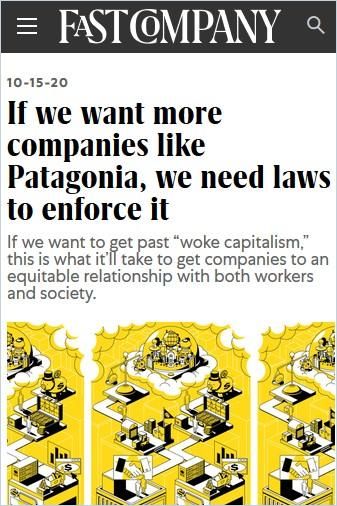
If we want more companies like Patagonia, we need laws to enforce it
Fast CompanyAn Unapologetically Activist Company
Chouinard and Patagonia model a rare kind of corporate leadership. Because Patagonia, as a consumer goods company, can mitigate but not completely erase its environmental impacts, the company pledges the greater of 1% of sales or 10% of its net income to environmental causes. It set up its 1% For The Planet initiative to grow the alliance of businesses pledging to work towards environmental protection. The company reports it’s given $116 million to environmental groups since 1985, and they raised an additional $10 million to donate to make up for the tax cut given to corporations by the Trump administration. A group of 450 employees decides which groups receive grants.
Business leaders can be socially responsible visionaries.
Mihaly Csikszentmihalyi
The company is conscious of its place as a role model for other sustainably-minded businesses, and in 2013 founded Tin Shed Ventures to invest in sustainable start-ups. Success and conviction drive Patagonia to host a “Tools Conference” every two years to train environmental activists. The only TV commercial Patagonia ever made was not to sell clothing, but to raise awareness of the Trump administration’s attack on national parks. In fact, the company sued the administration after it moved to reduce the size of two Utah monuments, an opening salvo in the process to potentially allow mining and drilling on public lands. To many people, Patagonia is a business that has established itself as the ultimate vehicle for positive change.
Next Steps
Read about other billion-dollar businesses turning their commitment to sustainability into profits:

Read more about cultivating a thriving, dynamic, agile organization here:
And start here for more ideas about corporate social responsibility initiatives:


